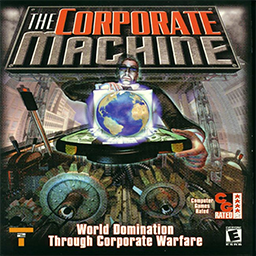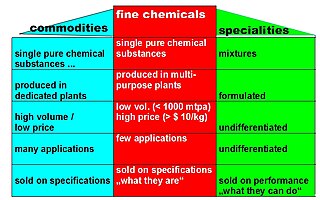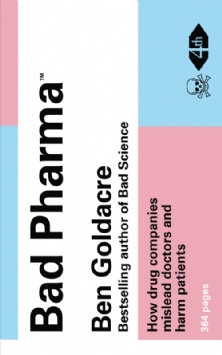
Tetracycline, sold under various brand names, is an oral antibiotic in the tetracyclines family of medications, used to treat a number of infections, including acne, cholera, brucellosis, plague, malaria, and syphilis.

Clarithromycin, sold under the brand name Biaxin among others, is an antibiotic used to treat various bacterial infections. This includes strep throat, pneumonia, skin infections, H. pylori infection, and Lyme disease, among others. Clarithromycin can be taken by mouth as a tablet or liquid or can be infused intravenously.

A generic drug, or simply generic, is a pharmaceutical drug that contains the same chemical substance as a drug that was originally protected by chemical patents. Generic drugs are allowed for sale after the patents on the original drugs expire. Because the active chemical substance is the same, the medical profile of generics is equivalent in performance compared to their performance at the time when they were patented drugs. A generic drug has the same active pharmaceutical ingredient (API) as the original, but it may differ in some characteristics such as the manufacturing process, formulation, excipients, color, taste, and packaging.

The Corporate Machine is a business simulation computer game from Stardock in which the goal is to create a corporation in one of four industries and eventually dominate rival companies. To win the player must dominate the chosen market. The Corporate Machine is a follow-up to the game Business Tycoon, which was itself a sequel to the game Entrepreneur, all developed by Stardock.
The pharmaceutical industry is one of the leading industries in the People's Republic of China, covering synthetic chemicals and drugs, prepared Chinese medicines, medical devices, apparatus and instruments, hygiene materials, packing materials, and pharmaceutical machinery. China has the second-largest pharmaceutical market in the world as of 2017 which is worth US$110 billion. China accounts for 20% of the world's population but only a small fraction of the global drug market. China's changing health-care environment is designed to extend basic health insurance to a larger portion of the population and give individuals greater access to products and services. Following the period of change, the pharmaceutical industry is expected to continue its expansion.

In chemistry, fine chemicals are complex, single, pure chemical substances, produced in limited quantities in multipurpose plants by multistep batch chemical or biotechnological processes. They are described by exacting specifications, used for further processing within the chemical industry and sold for more than $10/kg. The class of fine chemicals is subdivided either on the basis of the added value, or the type of business transaction, namely standard or exclusive products.

Levobupivacaine (rINN) is a local anaesthetic drug indicated for minor and major surgical anaesthesia and pain management. It is a long-acting amide-type local anaesthetic that blocks nerve impulses by inhibiting sodium ion influx into the nerve cells. Levobupivacaine is the S-enantiomer of racemic bupivacaine and therefore similar in pharmacological effects. The drug typically starts taking effect within 15 minutes and can last up to 16 hours depending on factors such as site of administration and dosage.

Clocortolone (Cloderm) is a topical steroid. It is used in the form of an ester, clocortolone pivalate, and applied as a cream. It is used for the treatment of dermatitis and is considered a medium-strength corticosteroid. It is unusual among steroids in that it contains a chlorine atom and a fluorine atom.

Amcinonide is a topical glucocorticoid used to treat itching, redness and swelling associated with several dermatologic conditions such as atopic dermatitis and allergic contact dermatitis. Amcinonide can also be classified as a multi-functional small molecule corticosteroid, which has been approved by the FDA and is currently marketed as an ointment, lotion, or cream. It acts as both a transcription factor for responses to glucocorticoids and modulator for other transcription factors while also regulating phospholipase A2 activity.
A two-sided market, also called a two-sided network, is an intermediary economic platform having two distinct user groups that provide each other with network benefits. The organization that creates value primarily by enabling direct interactions between two distinct types of affiliated customers is called a multi-sided platform. This concept of two-sided markets has been mainly theorised by the French economists Jean Tirole and Jean-Charles Rochet and Americans Geoffrey G Parker and Marshall Van Alstyne.

In pharmacology, potency or biological potency is a measure of a drug's biological activity expressed in terms of the dose required to produce a pharmacological effect of given intensity. A highly potent drug evokes a given response at low concentrations, while a drug of lower potency evokes the same response only at higher concentrations. Higher potency does not necessarily mean greater effectiveness nor more side effects nor less side effects.
A contract manufacturing organization (CMO), more recently referred to as a contract development and manufacturing organization (CDMO) to avoid the acronym confusion of Chief Medical Officer or Clinical Monitoring Organization in the pharma industry, is a company that serves other companies in the pharmaceutical industry on a contract basis to provide comprehensive services from drug development through drug manufacturing. This allows major pharmaceutical companies to outsource those aspects of the business, which can help with scalability or can allow the major company to focus on drug discovery and drug marketing instead.

Methylhexanamine is an indirect sympathomimetic drug invented and developed by Eli Lilly and Company and marketed as an inhaled nasal decongestant from 1948 until it was voluntarily withdrawn from the market in the 1980s.

Hash oil or cannabis oil is an oleoresin obtained by the extraction of cannabis or hashish. It is a cannabis concentrate containing many of its resins and terpenes – in particular, tetrahydrocannabinol (THC), cannabidiol (CBD), and other cannabinoids. Hash oil is usually consumed by smoking, vaporizing or eating. Preparations of hash oil may be solid or semi-liquid colloids depending on both production method and temperature and are usually identified by their appearance or characteristics. Color most commonly ranges from transparent golden or light brown, to tan or black. There are various extraction methods, most involving a solvent, such as butane or ethanol.

The term environmental persistent pharmaceutical pollutants (EPPP) was first suggested in the nomination in 2010 of pharmaceuticals and environment as an emerging issue in a Strategic Approach to International Chemicals Management (SAICM) by the International Society of Doctors for the Environment (ISDE). The occurring problems from EPPPs are in parallel explained under environmental impact of pharmaceuticals and personal care products (PPCP). The European Union summarizes pharmaceutical residues with the potential of contamination of water and soil together with other micropollutants under "priority substances".

Naldemedine, sold under the brand name Symproic in the US and Rizmoic in the European Union, is a medication that is used for the treatment of opioid-induced constipation in adults who have previously been treated with a laxative in the European Union, or to treat opioid induced constipation in adults with chronic non-cancer pain in the US. It is a peripherally acting μ-opioid receptor antagonist and was developed by Shionogi. Clinical studies have found it to possess statistically significant effectiveness for these indications and to be generally well tolerated, with predominantly mild to moderate gastrointestinal side effects. Effects indicative of central opioid withdrawal or impact on the analgesic or miotic effects of co-administered opioids have only been observed in a small number of patients.

Galaxy Trucker is a science fiction board game for two to four players. It was developed by Vlaada Chvátil, with graphics designed by Radim Pech. The Czech version of Galaxy Trucker was released in 2007 by Czech Games Edition, and a German version was published in the same year by Heidelberger Spieleverlag. In 2021, a revised edition of the game was released.

Bad Pharma: How Drug Companies Mislead Doctors and Harm Patients is a book by the British physician and academic Ben Goldacre about the pharmaceutical industry, its relationship with the medical profession, and the extent to which it controls academic research into its own products. It was published in the UK in September 2012 by the Fourth Estate imprint of HarperCollins, and in the United States in February 2013 by Faber and Faber.
Positech Games is a video game developer based in the United Kingdom. The company was founded in 1997 and belongs to the former Lionhead Studios programmer Cliff Harris. The company has published a number of PC games. One of the most notable publications by Positech is the strategy game of policy shift Democracy. Positech is known for making complex simulation games.

Natco Pharma is an Indian multinational pharmaceutical company based in Hyderabad with a presence in formulation and active pharmaceutical ingredients in both domestic and international markets. The company also manufactures Agro chemical products. It is a major producer of branded oncology medicines cardiology, diabetology and other pharma specialty drugs. The company specialises in producing complex medicines at affordable prices. The company has a presence in 50+ countries. NATCO is a science driven company and focuses on limited competition molecules in the US. .The company’s pharma division has 5 manufacturing facilities, 2 API and intermediate manufacturing facilities and the crop health sciences division has one formulation and one technical manufacturing facility. The company boasts of having a talent pool of 450+ scientists working out of two research centers in India. Across the globe, cancer treatment saw a sea change in early 2000s in terms of screening, diagnosis, molecular pathology, targeted therapies, immunotherapies, Bone Marrow Transplants, and supportive care. However, most of the targeted therapies were not within the reach of common man in India and many countries across the globe. Under this circumstances NATCO through their in-house R&D in the field of Generic targeted/specialty drug therapies made the products available at a fractional cost of the innovators’ drugs. Therapeutic advancements made a great positive impact on the survival and quality of life in many cancer patients and critically ill patients.

















